| |
|
|
 |
|
|
|
|
Last Updated:
12th Nov, 2008, 12:37 GMT
|
| |
|
Contents
|
 | | |
|
|
| |
|
Introduction
|
 | | |
|
JOGRE is a Java based client/server games engine which allows the creation of online multiplayer games.
To illustrate JOGRE in action the following labelled image shows a JOGRE server
and two clients, Dave and Bob.
At the top of the image is a screenshot of a server running in a DOS command prompt (1)
Under the server is a screenshot of 2 chess clients, Dave (2) and Bob . These are currently programmed
as Swing JFrames / JApplets. The client window is composed of a list of all the users
currently logged on (3), a list of all the tables currently being played (4) and
a global message chat window (5) where users can broadcast messages to each other.
|
| |
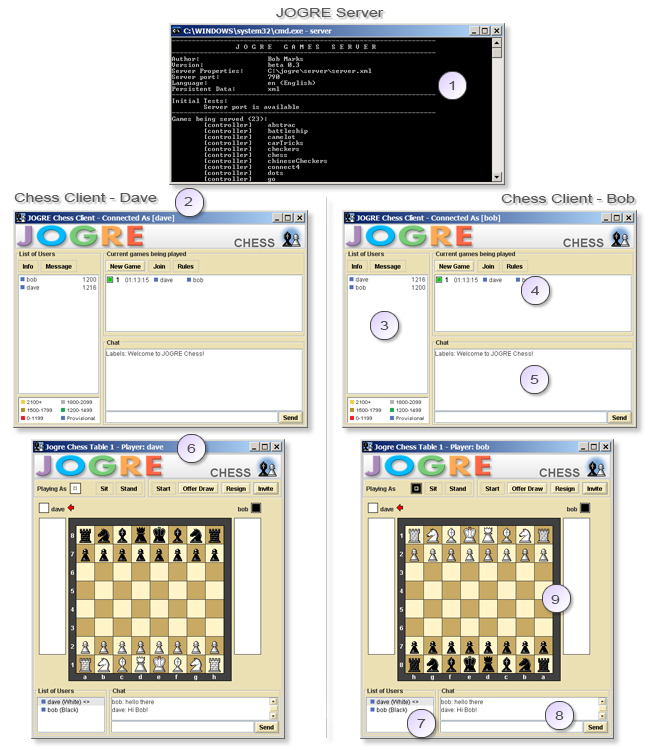 |
| |
|
A user creates a table frame (6) by clicking on the "New Game" button which brings up another
window. In the screenshot user Dave has created a table, which the user Bob has joined.
When both players Bob and Dave have sat down (sit button) and requested to start (start button) then
the game begins. When a player sits down this is updated on the player list (7)
on the bottom left of the screen. The two players can chat to each other using a
table chat window (8). The actual game itself is displayed in the middle of the
screen (9) and this is the only bit that differs from game to game i.e. the
JOGRE API takes care of the rest of the user/table logic and GUI interface.
Other functionality which JOGRE provides is the ability for a user to send a
private chat message to another player. To do this a user selects another user from the list (3)
and then clicks the message button. The following screenshot shows Dave
having a private message with Bob.
|
| |

|
| |
|
Tables in JOGRE have the ability to be either public or private. If the table is public then any user
in the system can join this table (using the "Join" button) and play. However, if a table is declared as private then
only users which are invited can join (using the "Invite" button).
This is the basics of what JOGRE is about. The beauty of the API in JOGRE is
that when a new game is created all this functionality previously discribed exists
in the API and only game needs to be worried about. The API is discribed in more detail
in the next section.
|
| |
| [ top ] |
| | | |
|
Games
|
 |
| |
|
At present there are 23 multi-player JOGRE games. Here they are in alphabetical order:
|
| |
 |
Abstrac
|
|
Abstrac is a card game for 2 players. Players take turns picking cards
from the deck. Points are scored for sets (cards of the same values of different
suits) and runs (cards of the same suit that are of consecutive values) collected.
But each card a player takes increases the values of his opponent's sets and runs...
|
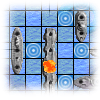 |
Battleships
|
|
The jogre version of battlehips
is played on two square grids, one for each player. On one grid the player
arranges his own ships and records the shots by the opponent. On the other grid, the player
records his own shots. Whoever sinks all of the opponents battleships wins the game.
|
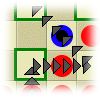 |
Camelot
|
|
Camelot is a 2 player board game programmed using JOGRE by Richard Walter. The board
is a 12x16 board with some pieces removed. The two squares at the top and bottom are
the players castles. There are several ways to win this game which involve moving players
into the other player castle pieces or capturing pieces.
|
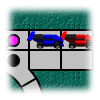 |
Car tricks
|
|
Car Tricks is a unique car racing game in that no one person controls a specific car.
Instead, players try to predict the entire order of finish for all the cars in the race.
All players can influence the speed of a car through their card play.
The player that most closely predicted the finishing
order of each car will emerge victoriously.
|
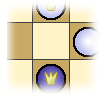 |
Checkers
|
|
A version of checkers has also been created using the JOGRE API.
The rules
of checkers arn't quite as complex as chess. The aim of the game in checkers
is to capture all the opponents pieces by jumping over them in a diagonal fashion.
|
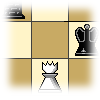 |
Chess
|
|
A playable version of chess has been created using the JOGRE API. The aim of chess
is to checkmate the opponents king piece so that it cannot move. The
rules
of chess are complex but the majority of them have been implemented.
|
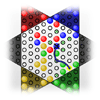 |
Chinese Checkers
|
|
Chinese Checkers is a board game that can be played by two to six people.
It is a variant of Halma; the objective of the game is to place one's pieces
in the corner opposite their starting position of a pitted hexagram by single
moves or jumps over other pieces.
|
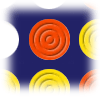 |
Connect4
|
|
The next game is an old turn based family classic
Connect Four
where a player drops his coloured pieces down each column.
When a player gets four in a row horizontally, vertically or
diagonally the game is won.
|
 |
Dots
|
|
The game dots
starts with an empty grid of dots, players takes turns adding a single horizontal or vertical
line between two unjoined adjacent dots. A player who completes the fourth side of a box earns
one point and takes another turn (the box will be filled with the players colour). The player with
the most boxes wins the game.
|
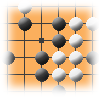 |
Go
|
|
The game Go is
a very old Chinese game. The two players, black and white, battle to maximize the territory
they control, seeking to surround large areas of the board with their
stones, to capture any opposing stones that invade these areas, and to
protect their own stones from capture.
|
 |
Grand Prix Jumping
|
|
In Grand Prix Jumping, players use cards to move their horses around the track
and over jumps. Cards are distributed via a "divide and choose" method where one
player will divide cards into two piles and the other player will choose which pile
to take. Points are accumulated during the game and the player finishing with the
fewer fault points is the victor.
|
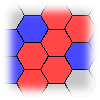 |
Hex
|
|
Players take turns placing a stone of their color on a single cell within the overall
playing board. The goal is to form a connected path of your stones linking the
opposing sides of the board marked by your colors, before your opponent connects
his sides in a similar fashion. The first player to complete his connection wins the game.
|
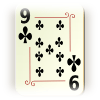 |
Ninety Nine
|
|
Ninety-nine is a card game for 2, 3, or 4 players. It is a trick-taking game that can
use ordinary Anglo-American playing cards. In ninety-nine, players bid for the number of
tricks that they will take; players who gain exactly that number of tricks gain a significant bonus.
One unusual feature of ninety-nine is that players bid by discarding three cards.
|
 |
Octagons
|
|
Octagons is a two player game developed by Richard Walter.
In octagons one player is red and the other is blue.
The goal of octagons is to connect two sides of
the board by claiming spaces on the board. The red player is trying
to connect the top and bottom of the board. The blue player is trying
to connect the left and right sides of the board.
|
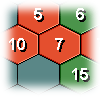 |
Propinquity
|
|
Another turn based game called propinquity has also been created. The aim of
propinquity is to build up as much terrority as you can. You can capture
enemy pieces by placing a piece of a higher value beside it. You can
also strengthen your own cells by placing a new piece beside existing cells.
|
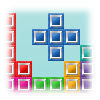 |
Quetris
|
|
Quetris is a varient of tetris. Each shape is made from 5 blocks (as opposed to
4 for tetris). These shapes have the added ability to flip horizontally and vertically.
Apart from this Quetris plays very much like a more challenging version of tetris.
|
 |
Reversi
|
|
The board game
Reversi
was developed by Anton Ugnich. Each reversi piece has a black side and a white side which
are placed on a board. All of the opponent's pieces between your
pieces are then turned over to become your color. The aim of the game is to
own more pieces than your opponent.
|
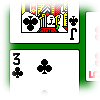 |
Spades
|
|
Spades is a trick-taking game somewhat akin to Hearts but more closely related to bridge.
The game is scored by hands, and the winner must make a certain number of points
which is decided before the game begins. The player on the dealer's left makes
the opening lead, and players must follow suit. To see the complete
rules click here.
|
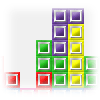 |
Tetris
|
|
There exists a JOGRE version of the very popular Russian game
Tetris.
In tetris, blocks of four squares, fall down the screen with the aim to
make solid horizontal lines. In JOGRE tetris if you create 2,3 or 4
horizontal line then 2,3, 4 lines respective lines appear on the
opponents screen.
|
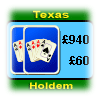 |
Texas Hold'em
|
|
Texas hold 'em is most popular version of poker. It is a community card game
where each player may use any combination of the five community cards and the
player's own two hole cards to make a poker hand. The objective of winning
players is not winning every individual hand, but rather making
correct decisions regarding how much to bet, raise, call or fold.
|
 |
Tic-tac-toe
|
|
Tic-tac-toe,
also called noughts and crosses and many other names,
is a paper and pencil game between two players, O and X, who alternate
in marking the spaces in a 3×3 board. A player wins by getting three of
their own marks in a horizontal, vertical or diagonal row.
|
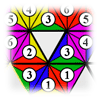 |
Triangulum
|
|
Triangulum is played on a triangular board made up of triangular spaces.
The pieces are triangular tiles whose edges are painted different colors and
have a basic value displayed in the middle. The game ends when no players
have legal moves and there are no more tiles in the bag to be drawn. The
player with the highest score is the winner.
|
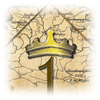 |
Warwick
|
|
Warwick the Kingmaker is a game for three to five players in
which you and your opponents play feuding lords trying to get the most
prestigious status in the realm. The victor is the player with the most
prestige points at the end of the game. A player earns prestige points by the actions
of his own house and by supporting another candidate house.
|
|
| |
|
To see screenshots of these games click
here.
|
| |
| [ top ] |
| | | |
|
JOGRE API
|
 | | |
|
The JOGRE API has been designed so that functionality which is common to all (or almost all) types
of games is taken care of. This functionality includes organising users,
table lists and player lists within tables. The API also deals with player chat which
can be global, private to a table or private to an individual user.
The following diagram visually shows the package structure of the JOGRE API.
The package structure has got simplier in alpha 0.2 with three main package
for holding client classes, server classes and common classes which both the
client and server make use of.
The main package is the org.jogre package which most other packages
exist under. However the JOGRE API is also packaged with the TableLayout
jar file from clearthought (in yellow) which the org.jogre.awt
package uses extensively and the XML parser NanoXML (in brown) which is
used for sending communication in XML form.
Arrows are used to show the dependencies between
packages. Most dependencies are in one direction to keep coupling low,
except the awt and client packages (although the client
to awt communication is achieved using interfaces).
|
| |
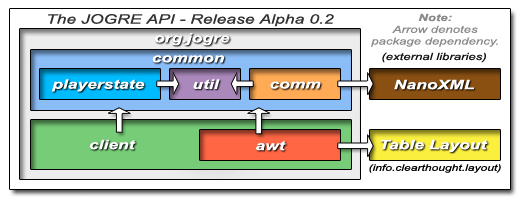 |
| |
- info.clearthough.layout -
TableLayout manager which provides the power of GridBagLayout but
is much easier to use.
- nanoxml -
Very small XML parser which is used primarilaly for communication object serialization.
-
Common Packages
- org.jogre.common -
Contains classes which are used both in the server and a client. These are
mostly data classes such as TableList, Table, UserList, User, PlayerList, Player etc which store
details on users and tables currently being played. It also contains the important JogreModel
class which is used to store the state of a game on client and on a server (optional).
- org.jogre.common.playerstate -
The state of a player is stored as classes in this directory (state design pattern).
These states include viewing, seated, ready to play and game started.
- org.jogre.common.util -
Contains a number of utility packages which most of the other packages make use of. These
include singleton classes which are used for loading properties/language labels. Also includes
common file utilities and a small logger.
- org.jogre.common.comm -
Contains 2 interfaces and a number of communication classes. Most communication
between a server and a Client is transferred as Comm objects.
-
Client Packages
- org.jogre.client -
Contains a number of classes specific to a JOGRE client.
- org.jogre.client.awt -
Contains various GUI components used in the creation of the JOGRE interface. Most of the
key classes in the JOGRE API are in this package.
Key Classes
A number of key classes exist in the JOGRE API. These key classes are
abstract and need to be extended to be used. Also some of the
classes contain abstract methods which must also be implemented. This pattern of
creating an application is known as the Template Design Pattern - a programmer
fills in the bits which are specific to his specific game - the rest is already
done in the API classes. The naming convention is usually to replace the word
Jogre with the name of the game. i.e. JogreModel becomes ChessModel.
|
| |
| Package |
Class/Interface |
Synopsis |
|
|
JogreClientFrame
|
This abstract class declares the main game frame where a user can see
users of the left, tables on the top right and a broadcasting style message
chat box on the bottom right. To create a new client frame for a game, such
as Chess for example, a class called e.g. ChessClientFrame extends this class
and implements 2 abstract methods for returning the correct
JogreTableFrame class (e.g. ChessTableFrame).
|
|
JogreTableFrame
|
The important JogreTableFrame which is where each game is played. Each time
a new table is created one of these frames appear. This class creates the
buttons at the top of the screen, the player list at the bottom left and the
message chat box on the bottom right. The main game area is set in the sub
classes e.g. ChessTableFrame using the setGamePanel (JPanel) method.
To use this class a class must extend it e.g. ChesTableFrame. Its fields
must include a data model (JogreModel e.g. ChessModel), a view of the data
(JogreComponent e.g. ChessBoardComponent) and a controller (JogreController
e.g. ChessController) for understanding mouse movements etc on the view.
The constructor in the sub class should initialise these MVC fields and
MUST call the setMVC (model, view, controller) method as this class
makes use of these.
|
|
JogreComponent
|
This class creates the view in the JOGRE MVC (model/view/controller)
architecture. This class extends a JComponent and also implements the
Observer interface. By implementing the Observer interface a change in the
model (JogreModel) which calls the JogreModel.refreshObservers () method will
automatically repaint this class.
Mouse/keys events can listened on using a JogreController which is set
using the setController method of this class.
|
|
|
JogreController
|
Adapter game controller class which creates empty methods for the
MouseListener, MouseMotionListener and KeyListener event interfaces.
This class also contains a link to the JogreModel, a connection thread to the
server and also a JogreComponent where the mouse movements/key presses are taking
place on.
To use this controller a class must extend it e.g. ChessController and
then override one of its event methods, update the correct model and send
communication to other users. To use the controller on a JogreComponent,
a JogreComponent calls its public void setController (JogreController
controller) method.
|
|
|
CommTableMessage
|
Abstract base class for table messages. This class is used for creating
communication objects between games e.g. CommExecuteChessMove.
From alpha 0.2 it is only necessary to create objects for very complex games as
communication properties can be used.
|
|
|
JogreModel
|
Abstract class which holds the state/model of a particular game when
extended. This class extends the Observable class so that JogreComponent
classes can update themselfs depending on changes made in this classes.
For a very simple example, to create the model for a game of
tic-tac-toe a class TicTacToeModel should extend this class and add a 3x3
two dimensional int array i.e.
int [][] = {{0, 0, 0}, {0, 0, 0}, {0, 0, 0}}.
|
|
| |
|
All of these key classes (with the exception of CommTableMessage) must be extended
from the JOGRE API to create a new game. The following UML diagram shows how a game of
chess can be created using the JOGRE API. The classes on the bottom are the chess
classes and the classes at the top are from the JOGRE API / Java SDK.
|
| |
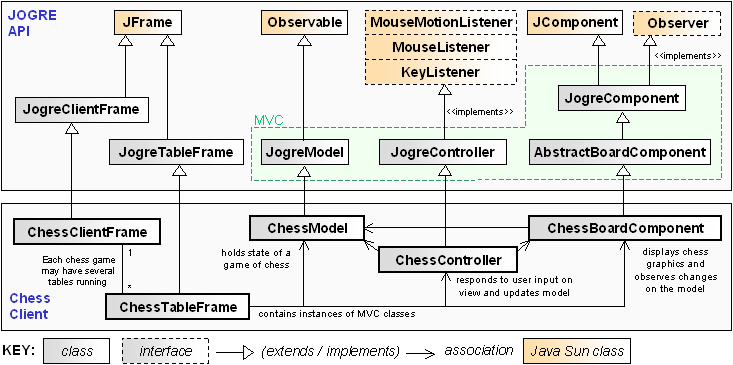
|
| |
|
The ChessClientFrame class contains a main method which when
executed, creates a JFrame with the various users, tables and global
chat on the screen. This screen generally doesn't change from game to game
i.e. ChessClientFrame contains very little code.
When the new table button is clicked a ChessTableFrame is created which
is the key class of a game. The parent class JogreTableFrame creates
buttons at the top, a player list and table chat on the bottom.
The actual game of chess is rendered in the
middle of screen and is created in JOGRE using a MVC (model/view/controller)
style architecture. The chess board in the middle (ChessBoardComponent)
is created from an AbstractBoardComponent which can be used to easily
create game boards (i.e. is also used to create a checkers board).
The ChessModel contains data relating to a game of chess including
an integer array of size 64 (8 by 8 cells of a chess board). Example values of
the array are: 0 = Empty, 1 = White Pawn, 2 = White Knight etc. The
ChessBoardComponent registers with the model so that every time the
ChessModel changes the board will refresh itself with the pieces
in the correct position.
The ChessController controls the
ChessBoardComponent i.e. listens to mouse events and updates
the ChessModel if a move has taken place.
The JogreController also has a link to the
TableConnectionThread and can inform the server that a move
has taken place and keep other clients in synch.
This is a very brief introduction / summary of what is required
to create a JOGRE game. A much more indepth look, with full source
listings and UML diagrams is available in the various
tutorials.
|
| |
| [ top ] |
| | | |
|
|

